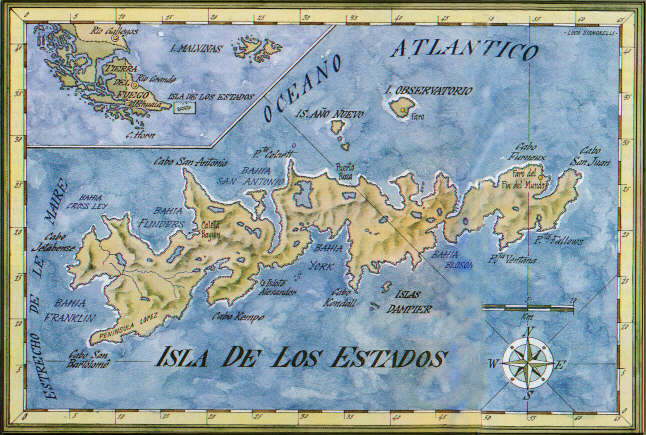
The Light House at the End of the World is a novel by French writer Jules Verne, but corrected by his son Michel Verne and published in the Magasin d´Education et de Recreation, Aug 15 (vol22, number 256) to December (vol 22, number 264) of 1905 and a full volume on July 29, 1905, year of Jules´death.
It was written around 1901, since the writer had several works in progress on the delivery order of their publications. It is considered one of the best novels of Verne´s literary stage.
The original version of Jules Verne Stanko was published in Montreal in 1999.
Summary of this piece:
In an uninhabited island in Patagonia where the Atlantic and Pacific oceans collide,there was a band of pirates led bt the Terrible Kongre. These are devoted to attacking ships that passed by the region.Their way of life is seriously threatened when the Argentine Government sent three marines to build and operate a lighthouse. The pirates killed two of them leaving the leader alive, Vazquez, because he managed to hide.
Brave Vazquez will then seek to survive in this remote place while looking for ways to end the wrongdoing of criminals. Later a U.S. sailor John Davis, joined Vazquez in his fight against the pirates...

The Faro del Fin del Mundo(officially known as San Juan de Salvamento Lighthouse) is in the northeast of the Staten Island, south of Argentina. It has only a height of 6 meters, but is 60m. above sea level.
It is the oldest lighthouse and the first to be built in southern waters; its construction dates back to 1884. Its equipment was the same type of light used later in Rio Negro lighthouse.The light was provided by 8 oil lamps. It was taken out of service on October 1, 1902, the day the Año Nuevo (New Year) lighthouse was lit on Observatorio Island.
The lighthouse inspired Jules Verne to write his novel The Lighthouse at the End of the World, published posthumously in 1905.
The original lighthouse remained in ruins for decades, but was recently restored respecting the original design, which is an octagonal flat house located on a rocky promontory with the lantern on its roof.












No hay comentarios:
Publicar un comentario